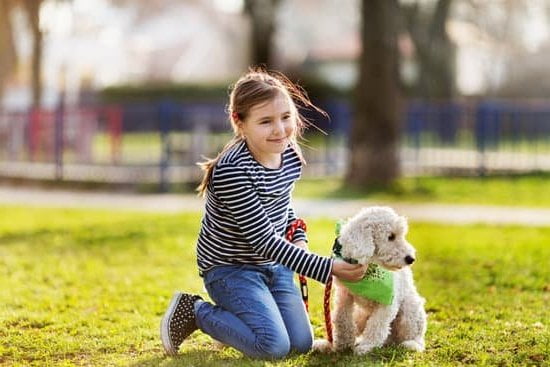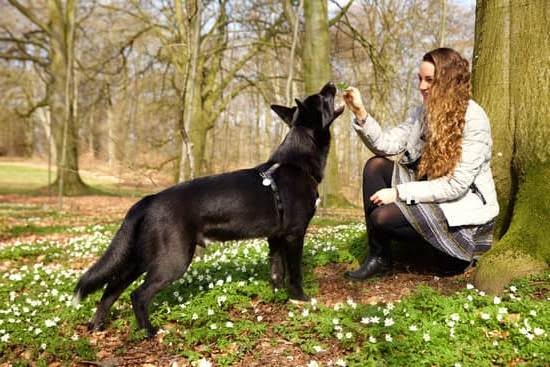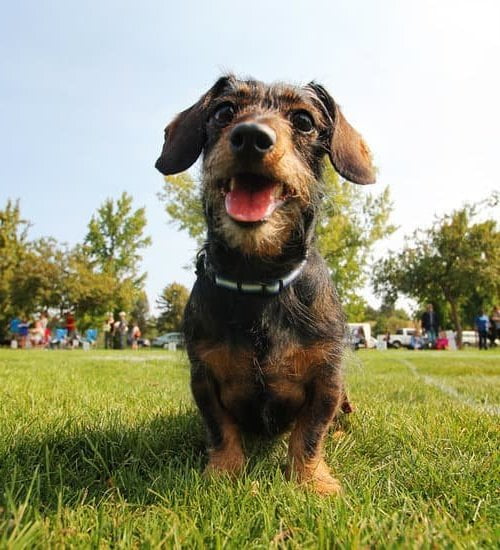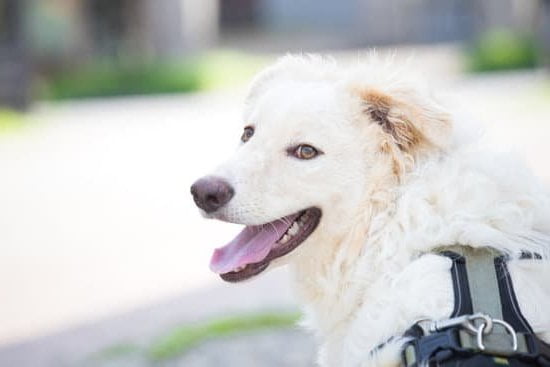Training a dog not to poop everywhere is a common challenge for pet owners, but with the right approach, it can be achieved successfully. Proper training is crucial for maintaining a clean and hygienic living environment for both you and your furry friend. Understanding the importance of training your dog’s bathroom habits is essential in creating a harmonious relationship between you and your pet.
Identifying the reasons behind your dog’s inappropriate pooping behavior is the first step in addressing this issue. It could be due to lack of proper training, anxiety, or even medical issues. By pinpointing the cause, you can tailor your training approach accordingly to effectively address the problem.
Establishing a consistent feeding schedule is key in regulating your dog’s bathroom routine. This helps in predicting when your dog needs to go outside and minimizes accidents indoors.
Creating a designated bathroom area, using positive reinforcement techniques, implementing a potty training schedule, addressing medical issues if necessary, and properly cleaning up accidents are all vital steps in helping your dog learn where to poop. With patience, consistency, and dedication, you can successfully train your dog not to poop everywhere and foster good bathroom habits for the long term.
Identifying the Reasons Behind Your Dog’s Inappropriate Pooping Behavior
Dogs may exhibit inappropriate pooping behavior for various reasons. Identifying the underlying cause is crucial in effectively addressing and correcting this issue. Here are some common reasons why dogs may poop everywhere:
- Lack of proper training: If a dog has not been adequately trained on where to poop, they may resort to doing their business wherever they see fit.
- Anxiety or stress: Dogs, like humans, can experience anxiety or stress, which may manifest in inappropriate bathroom habits. Changes in routine, environment, or separation anxiety can contribute to this behavior.
- Medical issues: Sometimes, a dog’s inappropriate pooping behavior could be due to an underlying medical problem such as gastrointestinal issues or parasites. It is essential to rule out any health concerns with the help of a veterinarian.
To address these issues and train your dog not to poop everywhere, it is essential to first identify the root cause. Once you understand why your dog is engaging in this behavior, you can take appropriate steps to correct it and encourage them to develop good bathroom habits.
- Consult a professional trainer or behaviorist if needed for guidance on how to train a dog not to poop everywhere.
- Keep a journal of when and where your dog tends to poop to look for patterns that can help pinpoint the cause of their inappropriate behavior.
- Ensure that your dog’s living environment is conducive to their well-being and comfort, as stress and anxiety can play a significant role in their bathroom habits.
By addressing the reasons behind your dog’s inappropriate pooping behavior, you can set the stage for successful training and establish proper bathroom routines that benefit both you and your furry friend.
Establishing a Consistent Feeding Schedule to Regulate Your Dog’s Bathroom Routine
Why a Consistent Feeding Schedule Matters
A consistent feeding schedule is crucial when it comes to training your dog not to poop everywhere. Just like humans, dogs have a digestive system that works on a routine. By feeding your dog at the same times every day, you can regulate their bathroom habits and make it easier for them to predict when they need to go. This predictability makes potty training much more effective as it helps you anticipate when your dog will need to relieve themselves.
How to Establish a Consistent Feeding Schedule
To establish a consistent feeding schedule for your dog, start by determining the appropriate number of meals per day based on their age, size, and breed. Puppies may require more frequent meals compared to adult dogs.
Once you’ve established the number of meals, set specific meal times and stick to them each day. Avoid free-feeding or leaving food out all day as this can disrupt your dog’s bathroom routine and make it harder for them to learn where they should be going.
The Impact of a Consistent Feeding Schedule on Potty Training
By maintaining a consistent feeding schedule, you are not only regulating your dog’s bathroom routine but also setting them up for success in potty training. When your dog knows exactly when they will be fed, they will also start developing a predictable bowel movement schedule.
This predictability makes it easier for you to anticipate when your dog needs to go outside, which in turn helps reinforce the proper bathroom behavior in the designated area. Remember, consistency is key when it comes to teaching your furry friend how to poop in the right place.
Creating a Designated Bathroom Area for Your Dog to Use
Creating a designated bathroom area for your dog is a key step in training them not to poop everywhere. This provides your furry friend with a specific spot to do their business, which can help reduce accidents and confusion. When choosing a bathroom area, make sure it is easily accessible to your dog and away from their eating and sleeping areas.
Choosing the Right Bathroom Area
Select an outdoor spot that is convenient for both you and your dog. Ideally, this area should be away from high-traffic areas in your yard to give your pet privacy. If you live in an apartment or don’t have access to an outdoor space, consider using a designated indoor spot such as a potty pad or litter box.
Establishing a Routine
Consistency is key when training your dog to use their designated bathroom area. Take your furry friend to the spot at regular intervals throughout the day, especially after meals, playtime, and waking up. Use verbal cues like “go potty” or “do your business” to help them associate this spot with relieving themselves.
Properly Maintaining the Bathroom Area
Keep the designated bathroom area clean and free of waste to encourage your dog to continue using it. Remove any feces promptly and periodically disinfect the area to prevent odors that may deter your pet from using it. Providing praise and rewards when they successfully use this spot will further reinforce good behavior. By establishing a consistent routine and maintaining the cleanliness of the designated bathroom area, you can effectively train your dog not to poop everywhere.
Using Positive Reinforcement Techniques to Reward Your Dog for Pooping in the Correct Area
Training a dog not to poop everywhere can be challenging, but using positive reinforcement techniques can be incredibly effective in encouraging the desired behavior. By rewarding your furry friend for pooping in the correct area, you can help them understand where it’s appropriate to relieve themselves. Here are some strategies you can use to effectively train your dog:
- Use treats or their favorite toy as a reward when they potty in the designated bathroom area.
- Offer verbal praise and petting after they successfully go potty where they’re supposed to.
- Establish a consistent routine of rewarding them every time they poop in the right spot to reinforce the behavior.
Positive reinforcement not only helps your dog learn where they should go potty, but it also strengthens the bond between you and your pet. Dogs naturally seek approval from their owners, so by praising and rewarding them for good behavior, you are creating a positive association with going potty in the correct area.
Implementing consistent positive reinforcement techniques will require patience and dedication on your part. Remember that every dog is different, so it may take some time for them to fully grasp the concept of where to poop. Stay consistent with your rewards and praise, and soon enough, your furry companion will understand what is expected of them.
In addition to using positive reinforcement techniques, it’s important to maintain a watchful eye on your dog’s behavior and provide immediate feedback when they make mistakes. Correcting inappropriate behaviors calmly and redirecting them to the designated bathroom area will help reinforce good habits over time. With patience, consistency, and plenty of rewards, you can successfully train your dog not to poop everywhere.
Implementing a Consistent Potty Training Schedule With Frequent Trips Outside
It’s important to take your dog outside regularly, especially after meals, playtime, and naps, as these are common times when they may need to go. By consistently taking them to the designated bathroom area or spot outside, you are helping them associate that location with the act of pooping. Be patient and give them time to sniff around and find the right spot before rewarding them for going in the correct place.
When implementing a potty training schedule, be sure to praise and reward your dog whenever they successfully poop in the designated area. Positive reinforcement goes a long way in encouraging good behavior and can help solidify their understanding of where they should go to relieve themselves.
Treats, verbal praise, or even a favorite toy can be used as rewards to reinforce the desired behavior of pooping outside. Remember that training takes time and patience, so stay consistent with your schedule and rewards to see progress over time.
By sticking to a consistent potty training schedule with frequent trips outside, you are setting your dog up for success in learning where it’s appropriate to poop. Remember that accidents will happen during the training process, but it’s important not to scold or punish your dog for mistakes.
Instead, continue with positive reinforcement techniques and patiently guide them towards forming good bathroom habits. With dedication and consistency, you can train your dog not to poop everywhere and enjoy a clean and well-mannered pet in your home.
Addressing Any Medical Issues That May Be Causing Your Dog to Poop Everywhere
It’s essential to consider the possibility of medical issues when trying to train your dog not to poop everywhere. If your dog is having accidents inside the house despite appropriate training efforts, it could be a sign of an underlying health problem. Some common medical issues that may cause inappropriate pooping behavior in dogs include urinary tract infections, gastrointestinal problems, parasites, or dietary intolerances.
One way to address this concern is by consulting with your veterinarian. A vet can conduct a thorough examination and run necessary tests to determine if there are any health issues contributing to your dog’s bathroom habits. Once any medical problems are identified and treated, you can then focus on proper training methods to prevent future accidents in the house.
In addition to seeking veterinary advice, it’s crucial to ensure that your dog is getting regular exercise and a balanced diet. Physical activity can help regulate your dog’s digestive system and promote overall well-being.
Likewise, feeding your dog high-quality food that meets their nutritional needs can contribute to better gastrointestinal health and reduce the likelihood of accidents indoors. By addressing any potential medical issues and taking care of your dog’s overall health, you can set them up for success in learning how to poop in the right place.
| Medical Issues | Steps |
|---|---|
| Urinary Tract Infections | Consult with a vet for diagnosis and treatment. |
| Gastrointestinal Problems | Ensure a balanced diet and regular exercise. |
| Parasites or Dietary Intolerances | Seek veterinary advice for appropriate management. |
Dealing With Accidents and How to Properly Clean Them Up to Prevent Future Incidents
Accidents are inevitable during the process of training a dog not to poop everywhere, but how you handle them can make a difference in preventing future incidents. When accidents happen, it’s crucial to remain calm and not scold or punish your dog. Dogs do not understand punishment after the fact and it may only serve to confuse them. Instead, focus on cleaning up the mess promptly and effectively.
To clean up accidents properly, start by using paper towels or disposable gloves to pick up solid waste. Then, use a pet-safe cleaning solution to thoroughly clean the area where the accident occurred. Avoid using ammonia-based cleaners as they contain chemicals that may attract dogs to urinate or defecate in the same spot again. After cleaning, ensure that the area is completely dry to remove any lingering odors that may lead your dog to revisit the spot.
Preventing future accidents also involves supervising your dog closely and providing plenty of opportunities for them to go potty in the designated bathroom area. If you catch your dog in the act of pooping inappropriately, calmly interrupt them and redirect them to the correct area.
Consistency is key in reinforcing good bathroom habits, so continue to positively reward your dog when they poop in the right place. With patience and persistence, your furry friend will learn where it’s acceptable to do their business.
Celebrating Your Dog’s Progress and Success in Learning How to Poop in the Right Place
As a responsible pet owner, it is crucial to acknowledge and celebrate your dog’s progress and success in learning how to poop in the right place. This positive reinforcement will not only reinforce good behavior but also strengthen the bond between you and your furry companion. By recognizing your dog’s efforts, you are motivating them to continue with their potty training journey.
One way to celebrate your dog’s progress is by using verbal praise or giving them their favorite treats every time they successfully use the designated bathroom area. Dogs thrive on positive reinforcement, so make sure to be consistent and enthusiastic in your praises. Additionally, you can incorporate physical affection like belly rubs or playtime as a reward for their good behavior.
It is important to remember that each dog learns at their own pace, so be patient and understanding throughout the training process. Do not get discouraged by setbacks or accidents along the way. Instead, focus on the improvements and milestones that your dog achieves. By consistently celebrating their progress, you are encouraging them to continue developing good bathroom habits and become a well-trained and happy companion.
Encouraging and Maintaining Good Bathroom Habits in the Long Term for a Well-Trained and Happy Dog
In conclusion, training a dog not to poop everywhere requires patience, consistency, and understanding. By following the steps outlined in this article, you can effectively teach your furry companion proper bathroom habits and ensure a harmonious living environment for both of you.
Establishing a consistent feeding schedule plays a crucial role in regulating your dog’s bathroom routine. By feeding your dog at set times each day, you can anticipate when they will need to go outside to do their business. Pairing this with frequent trips outside as part of a structured potty training schedule reinforces the desired behavior of using the designated bathroom area.
It’s important to remember that accidents may happen during the training process. When they do occur, it’s essential to clean them up promptly and thoroughly to prevent future incidents.
Using positive reinforcement techniques to reward your dog for pooping in the correct area will also help in reinforcing good bathroom habits in the long term. With dedication and proper guidance, you can successfully train your dog not to poop everywhere and enjoy a well-trained and happy canine companion by your side.
Frequently Asked Questions
How Do I Get My Dog to Stop Pooping Everywhere?
To get your dog to stop pooping everywhere, you must establish a consistent bathroom routine. Take your dog out frequently, especially after meals and naps. Supervise them closely indoors and reward them for going in the designated outdoor spot.
How Do I Stop My Dog From Pooping in Places?
If your dog is pooping in places they shouldn’t be, it’s important to thoroughly clean those areas to remove any scent markers. Supervision is key to prevent accidents – consider using baby gates or crates when you can’t watch them closely. Positive reinforcement for going in the correct spot is crucial.
How Do I Train My Dog to Poop in One Place?
Training your dog to poop in one place involves creating a designated bathroom area outdoors. Take your dog to this spot consistently on a leash and praise them when they go there. Be patient as it may take time for them to associate that spot with toileting. Consistency and positive reinforcement are key.

Welcome to the blog! I am a professional dog trainer and have been working with dogs for many years. In this blog, I will be discussing various topics related to dog training, including tips, tricks, and advice. I hope you find this information helpful and informative. Thanks for reading!





